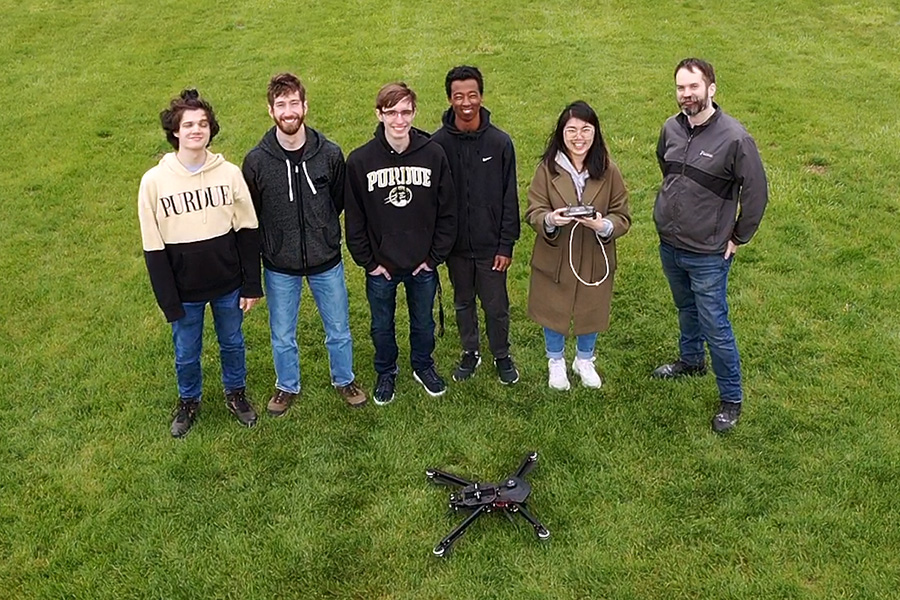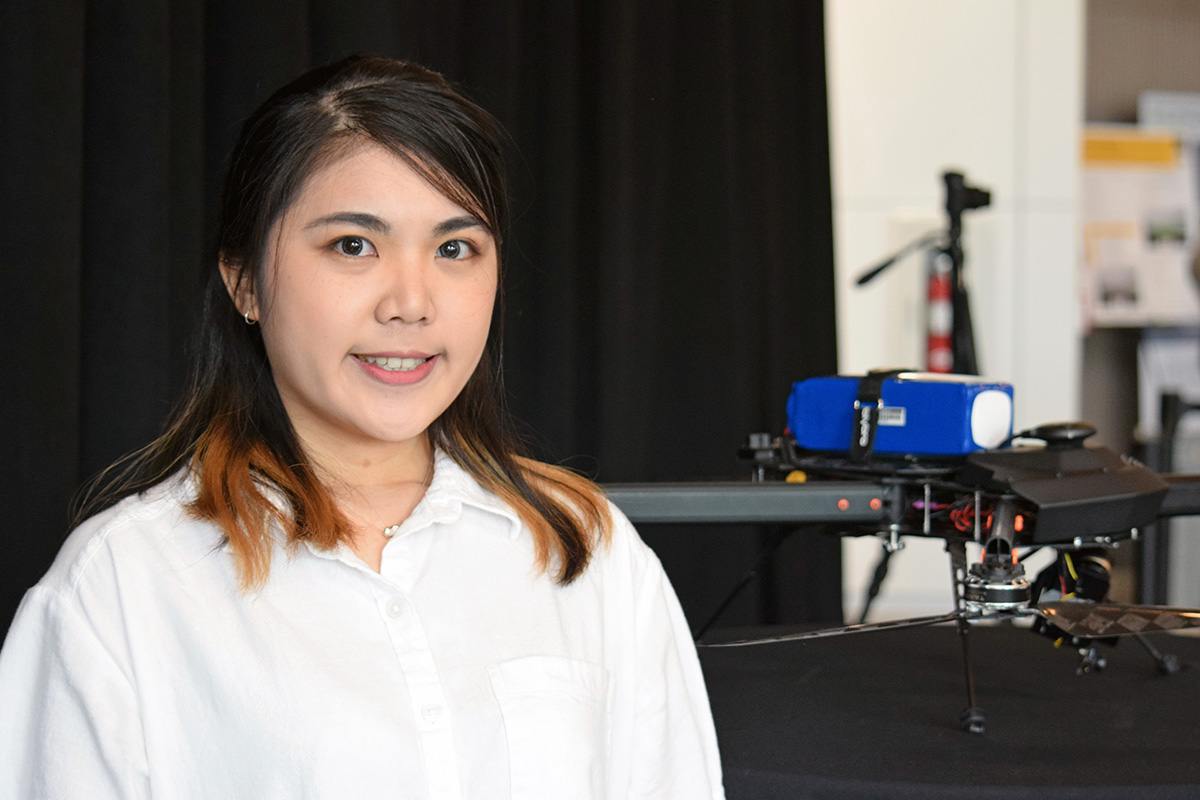Purdue Students Developing Drone with Thermal Imaging to Improve Search and Rescue

Purdue AAE students are hoping their design will prove the most effective at finding hikers who are literally lost in the woods. Students are in the final stages of testing a drone that aims to identify the shape of a person heavily obscured by dense forest. If successful, this prototype could lead to manufactured designs that would help first responders find missing persons — and earn the team $40,000 in prize money.
Image-processing systems these days are already effective at pinpointing a whole person, says Dr. James Goppert, an AAE lecturer and managing director of the Purdue UAS Research and Test Facility (PURT). But finding someone who is obscured by a tree branch, for example, is much trickier. That’s the difficulty inherent in the Fastfind: UAS Search Optimized portion of the First Responder UAS Triple Challenge. The final test in that competition will be happening at the end of June 2022.

Undergraduates participating in a Vertically Integrated Projects course at Purdue are working with intercollegiate peers at North Carolina Agricultural and Technical State University (NC A&T) on their attempt. They are one of just seven teams that have advanced into the third and final stage of the competition. Their concept has survived the initial design phase, they have provided video of a working model, and now are ready to fully test their drone in the field.
“We mounted a thermal imaging camera and a gimbal to a purchased airframe, and have conducted testing of the thermal camera,” says Ph.D. student Li-Yu Lin, who is leading the Purdue half of the team.
They have provided data captured by the drone to their teammates at NC A&T, who have been developing the image processing software. By combining moving thermal image data, timestamps, and GPS coordinates, they hope to have a system that will use all these dimensions to more accurately identify people.
Story by Alan Cesar
